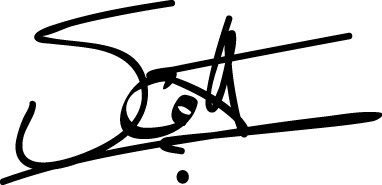My Teaching Philosophy
Essay by Scott Norton
 When asked about my teaching philosophy, I often get the feeling that people want some long academic dissertation on pedagogical ideals. But, the simple answer is I practice what I teach.
When asked about my teaching philosophy, I often get the feeling that people want some long academic dissertation on pedagogical ideals. But, the simple answer is I practice what I teach.
As far as I can tell, students enrolled in the courses I teach want to hone skills that they will take into the marketplace. They want to succeed. They want careers instead of jobs. They want to qualify for higher paying positions. They want the personal satisfaction that goes along with higher education. Individual definitions of success will vary, of course, but the typical student falls into a general theme of self-improvement.
My role as their instructor is that of a facilitator. I guide my students through the process of discovering how the general concepts in each course actually apply to their lives. I don’t merely want them to be able to come up with the right answers in class and on the test. I want them to understand why the answer is correct and how to consistently find correct answers to problems that differ from the examples presented in the curriculum. I believe that understanding is what gives their educational experience real value. This is especially true in teaching design, where there may be thousands of “correct” answers.
Art is subjective and the connection between art and commerce can be difficult to define – even for seasoned professionals. More often than not, the “why” behind a creative solution is far more compelling than the specific solution itself.
Therefore, my responsibility goes somewhat beyond merely presenting course content in lectures. To my mind, a lecture is merely a starting point. The real learning takes place in the application of the concepts presented, and the discussion of how they worked / didn’t work in that application. Active discussions are where critical thinking and fluency in the subject matter are really developed. Weaknesses are better identified and addressed in discussions than on an exam or in a paper in my experience, and it’s a process that lends itself to both online and on ground contexts.
It is probably no accident that the basic process is exactly the same that I have used throughout my non-academic professional career. Good business decision-making begins with the gathering of data. This includes decisions about visual communication / design. Once the data is understood, the problem to be solved by the decision can be defined and the specific solution to the problem developed. We use cool terminology like “discovery’, “exploration”, “brainstorming”, “refinement”, “execution”, and “success metrics”; but conceptually it’s a learning process not terribly different from what students experience.
By applying professional practices to the classes that I teach, I hope to help my students develop the competitive edge that will help them succeed in their chosen path. Discussions provide the opportunity to table dissenting ideas and facilitate greater student involvement in their own learning process. I often find myself learning as much from them as they from me, and I prefer trading knowledge to dictating ideals.

